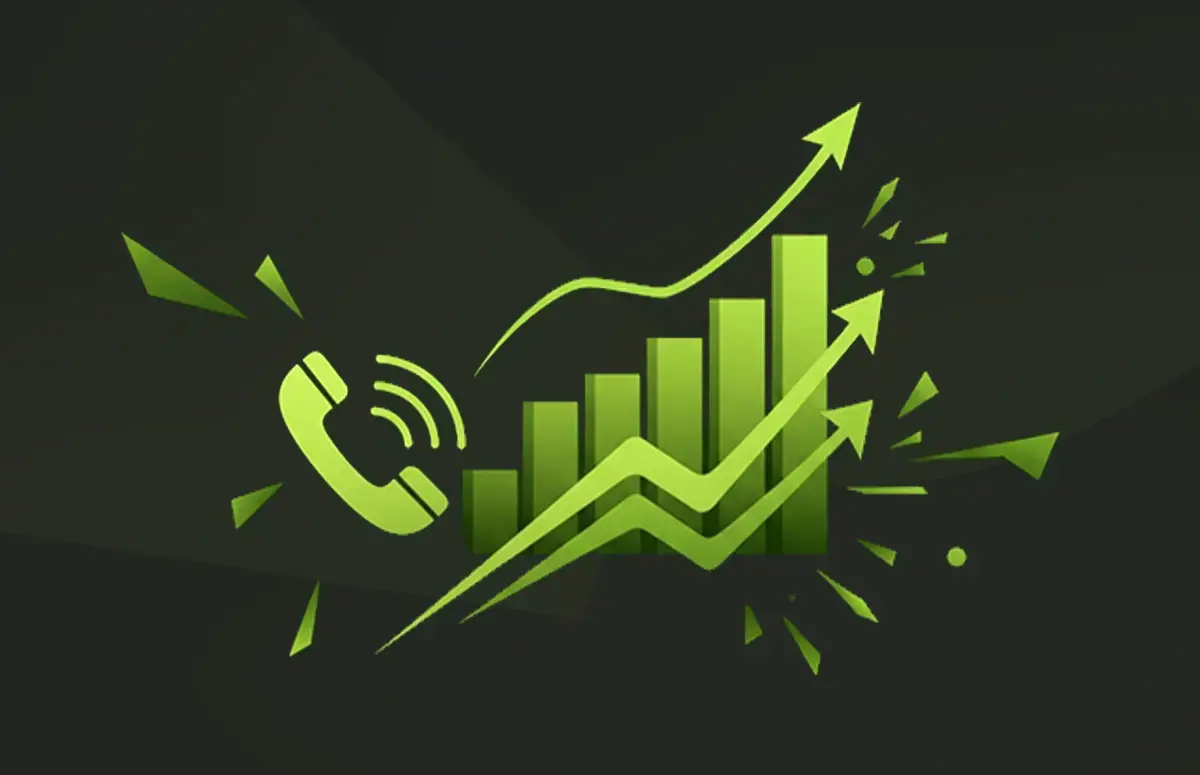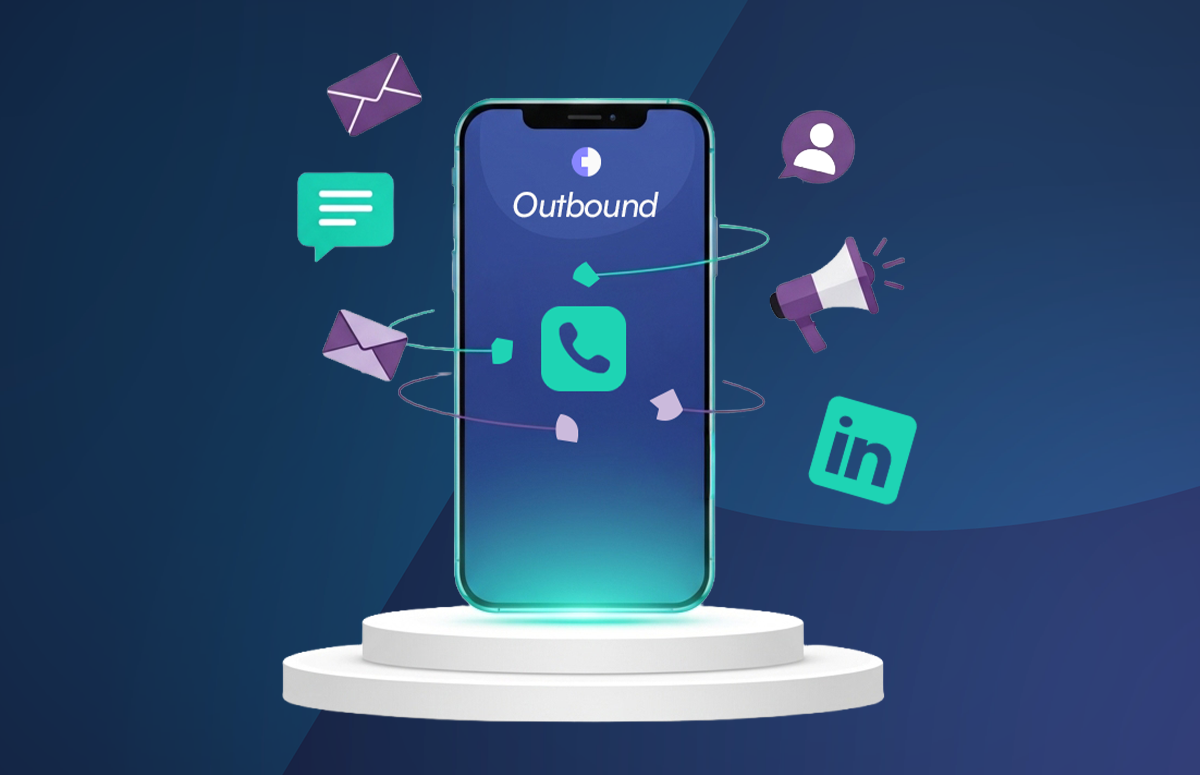What's the Difference Between Warm Calling Vs Cold Calling?
Warm calling vs hot calling explained:
What is the difference between a hot call and a cold call?
Here’s a quick summary:
Hot calling is when a sales rep calls a potential customer who’s shown interest in a product or service. Cold calling is when a rep wants to generate leads and calls a potential customer who hasn’t shown interest in a product or service.
It makes sense that you’ll receive more objections from a cold call than a warm call, right?
Making warm calling a desirable part of any sales strategy.
But how do you bring in more warm leads over cold?
This article will answer that question and explain the difference between warm calling vs cold calling.
What is cold calling?
Cold calling is an outbound sales tactic SDRs use to reach potential customers who might have never heard of your product or service.
The call is cold because the caller isn’t expecting it, and the sales rep is likely using a prospecting list for outreach.
Callers often follow a cold calling script, and an example of a typical call would be:
“Hi (name), it’s Ann from Cognism here. I appreciate that I’ve called you out of the blue. Is now a bad time?”
If cold calling is a significant part of your B2B sales strategy, then you might be interested in this quick video on how to nail the first 30 seconds of a cold call 👇
💡Tip! When cold vs warm calling doesn’t work, you can also try engaging with a prospect via cold email.
What is warm calling?
Warm calling is when a rep calls a sales lead they’ve already communicated with. The call is warmer than a cold call because the prospect is familiar with you and your company.
When choosing between a cold call vs warm call, warm calls are always the better option.
Why?
They are a fantastic way to increase the success rate of your calls and meet your sales goals!
Warm calling is a more effective way to engage with leads than cold calling. Potential customers will have already shown some interest in your products or services. This leads to higher success rates and better conversion rates.
An example of warm calling is when you’ve called a prospect before, and they requested you call them back at a later date.
Or you’ve been communicating via an inbound nurture campaign, and they are ready to move down the sales funnel.
Tips to engage with warm leads
Cold calling vs warm leads means engaging with the leads you want.
Here are three top tips to keep your warm prospects flowing:
- Don’t call your warm lead repeatedly. This will only annoy them, so respect the timeframe they’ve given you. And, if you’ve already pitched your product, trust that they might need more time before they make a decision.
- Do follow up with an email that offers some value. Share a case study of a similar business you’ve helped. Or, maybe a bit of ungated content that they might enjoy reading. This will remind them of what your company has to offer and keep you top of mind when they compare products or services.
- Practice active listening. Even though they are a warm prospect, they’re still unsure if your business can help them. It’s your job as a sales rep to listen to their pain points and provide solutions.
What is hot calling?
Hot calling is when a rep calls a sales lead who’s highly interested in what you’re selling. It’s a hot call because the prospect is expecting it. This makes the call much more likely to be successful.
An example of a hot call would be when you meet a prospect at an event, and they ask you to call them to set up an appointment.
Or when a prospect has engaged with your inbound marketing by heading to your website and filling in a form.
In both these scenarios, you’d be calling a hot lead via a hot call.
Hot calling tips
Forget warm vs cold calling. You want more hot calls!
When making hot calls, it’s important to:
- Be prepared with information about the prospect’s interests and needs.
- Have a clear understanding of how your product or service can benefit them.
Here are three tips to help you keep your hot prospects engaged:
- Don’t isolate hot calling. Instead, combine this sales technique with other targeted campaigns like social selling and email.
- Research, research, research. Just because a prospect is hot doesn’t mean you shouldn’t learn more about your customer. If anything, the more prepared you come to the call, the faster your customer will convert.
- Respect your prospect’s time. Just because you’ve established a relationship with them doesn’t mean you can call whenever you want or deliver your pitch without listening to what they have to say first. Ask permission and make the call a valuable interruption to their day.
When making hot calls, preparation is essential.
Have the information you need ready so you can tailor your pitch to address pain points and increase the likelihood of a successful call.
Understanding how your product or service can benefit your prospective customers is crucial. You can communicate the value of your offering and address any potential objections prospects may have.
Overall, Hot calling is a more targeted and efficient way to engage with leads than cold calling.
By focusing on warm and hot leads, sales reps can increase their chances of success and ultimately drive higher conversion rates.
Warm calls vs cold calls vs hot calls: key differences explained
All three of these B2B sales tactics require SDRs to call prospects.
The main difference between a warm call and a cold call is that warmer calls require some engagement before the call, while cold calls are much trickier.
Callers haven’t had any prior engagement with you or your brand, which often results in many cold calling objections. Objections that sales reps need to help a customer overcome before a sale can be made.
Which is better for your business?
Warm and hot calls bring in higher conversions and revenue success, but it can take longer to warm these customers up.
On the other hand, cold calling yields immediate results and more targeted leads.
Understanding the differences between cold calling vs warm calling can help you establish which type of sales call works best with your strategy.
Focusing on hot calls may yield better results if you have a prospecting list of warm leads who have already expressed interest in your product or service.
However, cold calling may be necessary if you want to expand your reach and generate new leads.
It’s essential to have a balanced approach and incorporate both hot and cold calling strategies into your sales efforts to maximise your chances of success.
Ultimately, they all offer their own advantages and, when used in combination, exhibit outstanding results.
Fire up your pipeline with Cognism
Choosing between cold calls vs warm calls?
Or maybe hot calls are more your thing?
No matter your choice, Cognism can help you fire up your pipeline. We supply phone-validated via an AI-powered prospecting solution: Sales Companion.
Click 👇 to book your demo.


/Cold%20calling%20strategy/cold-calling-strategy-card.webp)

